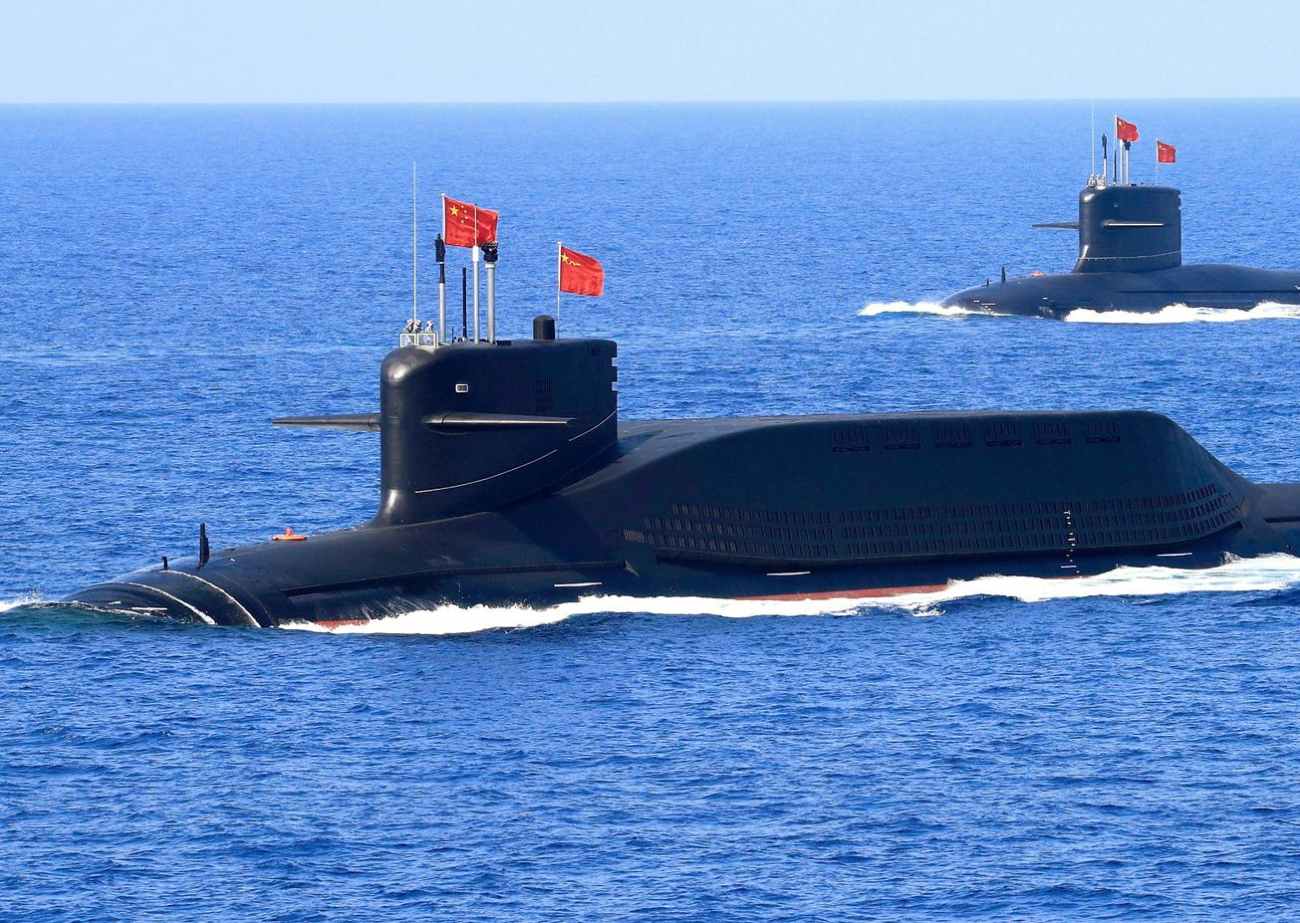Research recently conducted by China’s People Liberation Army (PLA) scientists has claimed that PLA submarines equipped with laser weapons would be able to destroy SpaceX’s Starlink satellites if China’s security was in jeopardy.
Forget J-20, China’s H-20 Stealth Bomber Threatens ‘Easy Penetration’ Of LAC; How Can IAF Respond?
The research states that a submarine fitted with a solid-state, megawatt-class laser weapon can fire at satellites while remaining underwater and retracting its “optoelectronic mast” before diving back to the ocean floor.
In a peer-reviewed paper published last month in the Chinese-language journal Command Control & Simulation, the project team headed by Wang Dan, a professor at the Naval Submarine Academy, suggested that this kind of laser attack submarine could be mass-produced in the future and stationed in different oceans to counter military threats to China. A report from the South China Morning Post revealed the study’s specifics.
The scientists concluded that hiding the attack — rather than taking down the satellite — was the biggest challenge for anti-satellite operations. Wang and her colleagues write in the report, “Currently, the primary means of anti-satellite operations rely on ground-to-air missiles, but this approach has certain issues, mainly in terms of concealment.”
Anti-satellite operations from the surface are prone to be detected by adversaries. The report explains that missile launches often leave extensive smoke trails. Attacking from a surface location facilitates the easy disclosure of one’s location, thereby creating an opening for enemy artillery to launch an attack. The group declared it “too risky” and added that the fact that these satellites were getting smaller was not helpful.
“Taking the satellites launched by the Starlink program as an example, they are numerous, densely packed, and small in size, making the satellite network extremely resilient. Even if a significant number of satellites are destroyed, there are redundancies to replace them. Therefore, using missiles to attack such satellites is highly inefficient,” Wang’s team said. “Submarine-based laser weapons can solve these issues.”
Space researchers and analysts have repeatedly warned that directed-energy weapons, including powerful microwave systems and lasers, can be aimed at satellites in Low Earth Orbit (LEO). They are also the only means of engaging a large number of targets in LEO.

Earlier, China claimed to have developed a compact power source that could drastically reduce the size of a high-power microwave weapon capable of downing satellites. According to researchers, this device can produce up to 10 gigawatts of power, with a frequency of 10 pulses per second.
Chinese researchers are not the only ones to float the idea of submarines destroying satellites. A US Naval Institute feature article published earlier this year emphasizes the role of a submarine’s stealth in launching an anti-satellite attack.
“Satellite constellations in LEO are the most susceptible to antisatellite weapons, such as the direct-ascent interceptors the United States demonstrated during Operation Burnt Frost,” it stated. The author cautions that these direct-ascent interceptors are expensive, and in a great power battle, their usefulness would be severely limited by the large number of targets nearby.
‘Raptor Salad’ For Lunch! US F-22 Raptor Outgunned, Outmaneuvered By German Eurofighter Typhoon?
The article states that with the operational reliability of directed-energy technologies established nuclear-powered submarines equipped with anti-satellite (ASAT) directed-energy weapons will be in a position to participate in offensive space warfare.
The latest PLA research also included a step-by-step manual for assaulting satellites similar to Starlink from the sea.
A Stepwise Guide To Eliminate Starlink?
To execute the mission, one or more laser-equipped submarines are initially dispatched to the maritime area. Following the leadership’s directive, they enter the designated sea region and wait for the satellites to pass into their attack range. The laser weapon’s raising time is set according to the previously obtained satellite overhead time.
The laser weapon is raised when the satellite reaches the attackable range. “Due to the limitations of the submarine’s detection equipment, other forces are required to provide satellite position guidance for the submarine to attack the satellite. After the attack is completed, the submarine can submerge and wait for the next mission or return to the home port.”
Intriguingly, while the latest PLA study specifically mentions Starlink, it does not elaborate on why it would pose a threat to China’s security. However, previous reports indicated that China was wary that SpaceX was building a network of ‘spy satellites’ for the United States.

Moreover, the report comes weeks after another report by PLA’s researchers stated that China was analyzing Starlink’s role in a potential Taiwan contingency.
Ukraine has been using the Starlink system—which connects low-orbit satellites to portable user terminals and provides faster internet access than other satellite services—to counter Russia’s invasion.
Over the last two years, Chinese academics in the PLA have examined how SpaceX’s Starlink satellites help secure military communications in Ukraine as the nation fights back a Russian invasion. There is widespread concern that Taiwan would also get access to Starlink terminals to conduct operations against China in the event of a Chinese invasion.
The primary purpose of the Starlink satellites is communication. However, some Chinese military experts have expressed concern that future Starlink satellites might carry additional payloads for military operations like electronic interference and reconnaissance.
This concern has grown with the Starshield program, which SpaceX and the Pentagon jointly launched in what is alleged to be a bid to track China’s hypersonic weapons.
Two Starlink satellites made a hazardous approach to the Chinese space station in 2021, prompting the astronauts to begin emergency evacuation procedures. The incident convinced Beijing that the US could use these low-cost satellites to target China’s expensive space assets.
Earlier, a study was led by Ren Yuanzhen, a researcher with the Beijing Institute of Tracking and Telecommunications under the PLA’s Strategic Support Force, which said China should be able to disable or destroy SpaceX’s Starlink satellites if they threaten national security.
“A combination of soft and hard kill methods should be adopted to make some Starlink satellites lose their functions and destroy the constellation’s operating system,” said the paper, published in the domestic peer-reviewed journal Modern Defence Technology.
Starlink is sometimes referred to as unbreakable because it can function normally even if a satellite is lost, despite having more than 2,300 satellites in orbit and counting. Chinese analysts have calculated that in the event of a future conflict, they might be turned against China.
- Contact the author at sakshi.tiwari9555 (at) gmail.com
- Follow EurAsian Times on Google News




